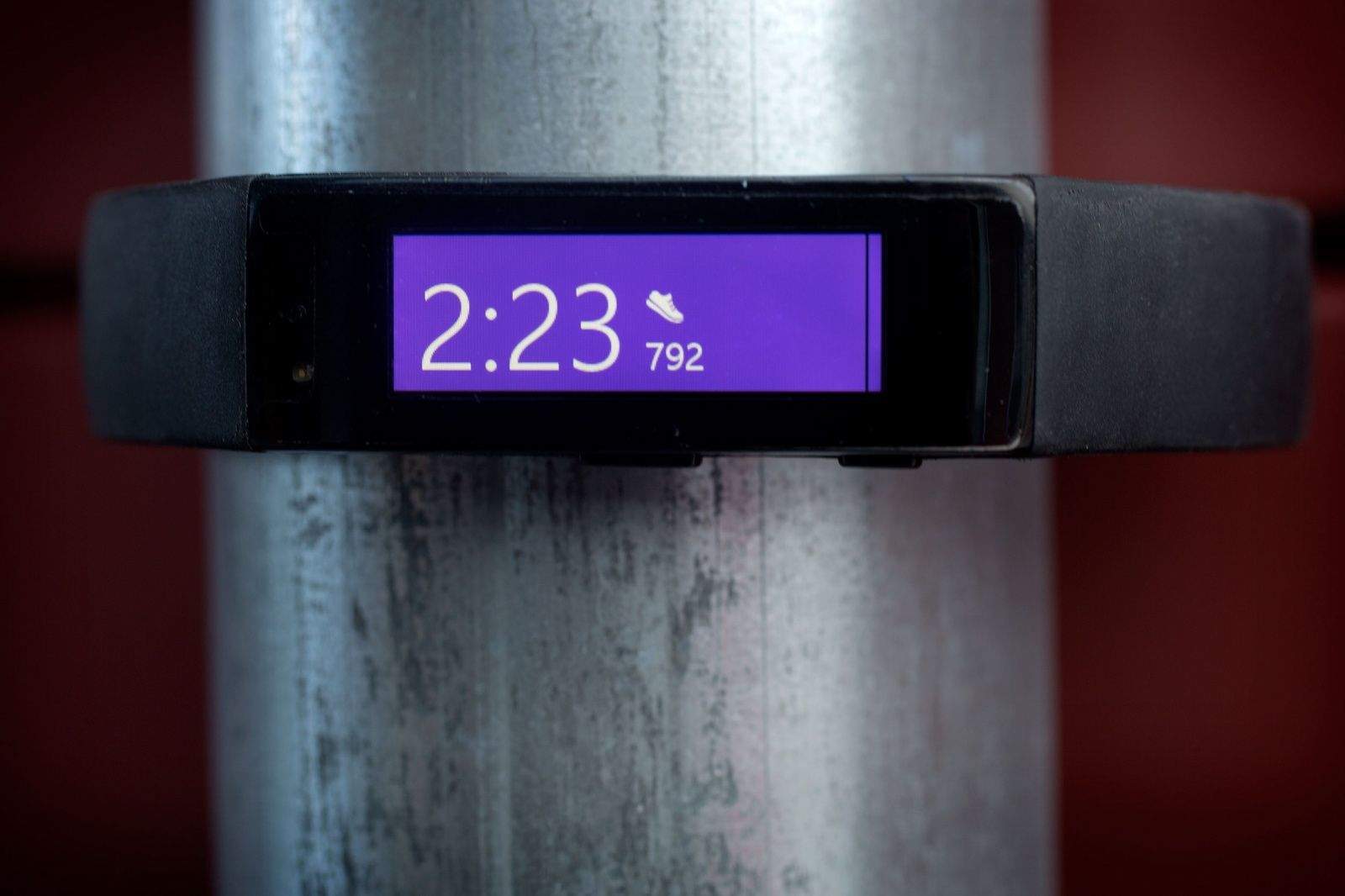I’m really digging the Microsoft Band. I’ve worn various fitness trackers for a couple of years now, starting with the original Jawbone UP and most recently the new Fitbit Charge.
I’ve had mixed results with them, and none have became indispensable. The Microsoft Band, on the other hand, is rapidly becoming a fixture on my wrist. It’s a great omen for the Apple Watch, which is due in early 2015. The Apple Watch will be like the Microsoft Band on steroids, and if it works as well, it’s going to be awesome.
The killer feature of the Microsoft Band is, of all things, notifications. The Band buzzes when I get a text, phone call or calendar event, among other things.
I say “of all things,” because this was initially a feature I had little interest in. I bought Microsoft’s $200 fitness tracker for its fitness functions, especially the built-in heart-rate monitor. I had little desire for another gadget that would incessantly buzz for my attention. It’s bad enough with the iPhone. I’m so overwhelmed with notifications on my computer, phone and other devices, it’s just become a torrent of stuff to ignore.
But the Band handles notifications intelligently. The things it notifies me about are the things I want to see: calendar events, reminders, incoming texts from my family.
Wrists were made for notifications
I already got all this on my iPhone, of course, but the wrist is the best place to see this stuff. It’s natural and easy to quickly glance at your wrist to see if something warrants your attention. It’s a lot easier than pulling out your phone. This sounds trivial, I know, a first-world problem for sure, but it’s a better experience. It’s far, far better to see the stream of your life data on your wrist than on something you have to pull from a pocket or purse.
Apple’s top designer, Jony Ive, is well aware of this. Talking about the Apple Watch, Ive told Businessweek: “What was interesting is that it took centuries to find the wrist and then it didn’t go anywhere else. I would argue the wrist is the right place for the technology.”
I discovered the joy of notifications the first day I had the Band. I lay on the couch all day with my iPhone in a different room. The phone kept ringing, and I could decide to take the call or not without leaving the couch. Ironic for a fitness band, no?
This all bodes well for the Apple Watch, which will handle notifications plus much, much more. Apple’s wearable will be a little more interactive. You will be able to respond to incoming messages with pictograms or canned responses, and you’ll be able to telegraph your heartbeat. I think this, plus notifications, will turn out to be the Apple Watch’s “killer app” — the thing that drives people to buy and wear it.
https://youtu.be/CEvjulEJH9w
Beyond notifications, there’s a lot to like about the Band. Smartly, Microsoft has ensured the Band works well with Apple and Android smartphones in addition to Windows Phones. The only feature not available to Apple and Android users is Cortana, Microsoft’s version of Siri. The speech-activated intelligent assistant can be invoked through the Band if you’re using Windows Phone 8.1. I’m kinda glad I can’t talk to my wrist like an idiot.
The design and build quality are great. I’ve been wearing it for weeks, and there’s no sign of wear. I applied the included screen protector (there are reports that the screen isn’t scratch-resistant). The protective film has taken a few dings but is holding up well.
The Band is also comfortable. I wear it on the inside of my wrist, which is the recommended way. Some people complain it’s big and uncomfortable, although those complaints seem to come from people who wear it on the outside of their wrist, like a watch. Wearing it pointing inward also seems better for glancing and interacting with the display.
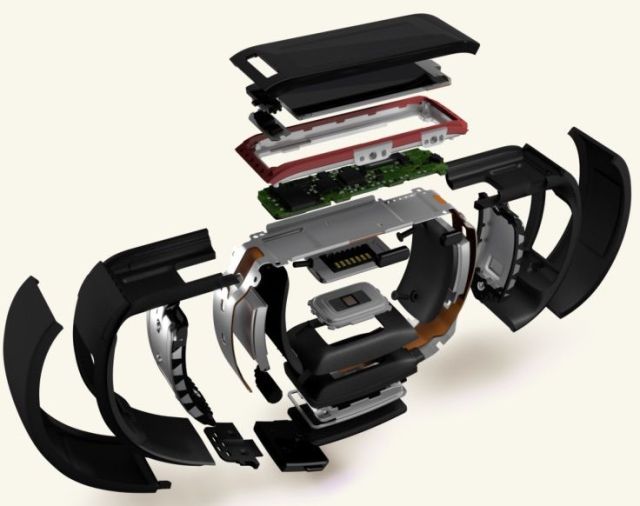
There’s a surprising amount of technology built into the Band. It was 10 sensors, from GPS to a UV cell to monitor sunlight exposure. There’s even a galvanic-skin response sensor that Microsoft hasn’t yet enabled. It can be accessed via this Windows phone-only app, Band Sensor Monitor.
Battery life is pretty good (48 hours or more, depending on usage), though I wish it would last a week. Day-to-day, it’s only died on me a couple of times, but it’s quick to recharge. I recharge it while I’m in front of my computer. A lot of users recharge it when they are in the shower. The Band is water- and sweat-resistant, but not waterproof.
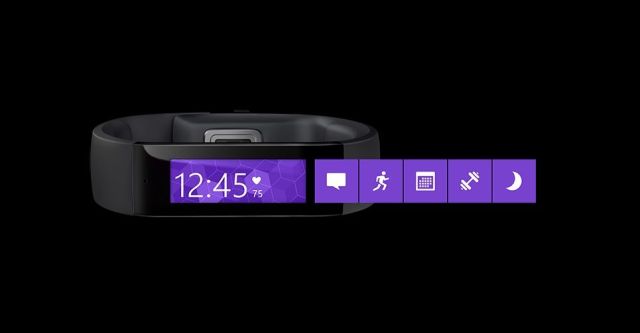
The interface is intuitive and thoughtful. It’s arranged as a series of tiles you can quickly swipe through. It doesn’t try to do too much. You can set an alarm, but you can’t reply to a tweet. There are charming little touches, like the way it says “goodnight” when you set it to track your sleep.
The accompanying Health app is well-designed and easy to use. Much like Apple’s Health app, it’s arranged as a set of tiles. All the smarts are built into the app, and I found the layout and functionality intuitive and easy. This is where you decide whether to get notifications from your Calendar (yes) or Twitter (no).
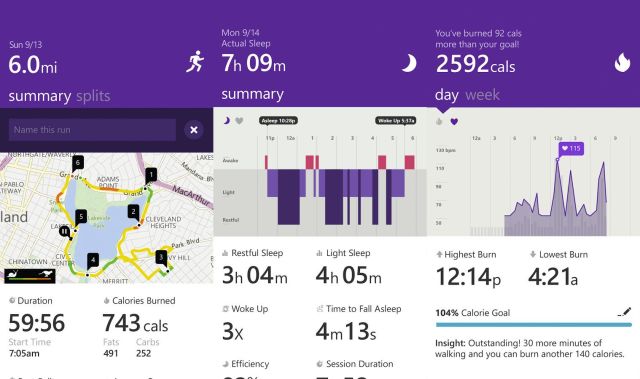
The Band synchronizes well with my iPhone 6 Plus, although it drops the Bluetooth connection more frequently than I’d like. It’s one of the Band’s minor annoyances, but I’m inclined to blame the iPhone rather than the Band. I’ve always found Bluetooth flaky on the iPhone.
The other annoyance is the absence of a lift-your-wrist-to-see-the-time function, like my beloved Casio Pathfinder, which I haven’t worn for weeks, and the Pebble smartwatch. To see the time, you have to light up the screen with a button press, or have it in watch mode, which keeps the screen on full-time.
Why you want a heart-rate monitor
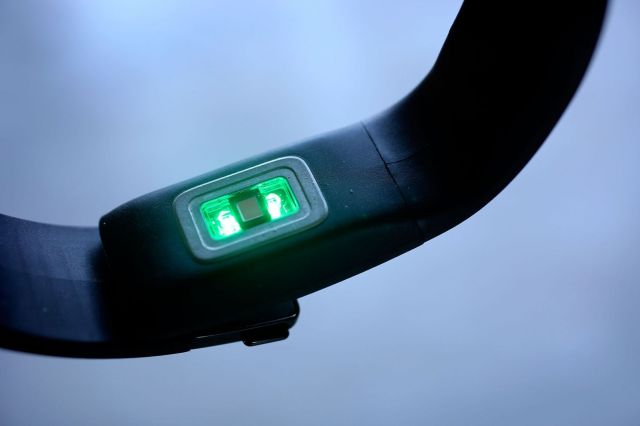
The fitness functions are really great. There’s nothing like having a built-in heart-rate monitor. The Band’s optical HRM is built into the clasp. The Apple Watch will have a similar HRM in the back of the watch body.
The HRM takes fitness tracking to the next level. It gives a great summary of a training session at the gym. I was surprised my heart rate got so high and stayed high for the entire session. This kind of insight is impossible with pedometer-based fitness trackers, which are good for walking or running but not for activities like lifting weights. The Band gives feedback about recovery time; you can time rest periods between sets and keep an eye on your heart rate to keep the workout aerobic.
The Band offers guided workouts from Gold’s Gym, Men’s Fitness and others. The Band walks you through the workout, which is a great way to use a fitness device. I haven’t yet tried it, but The Verge raved about it.
The HRM also tracks your heartbeat all day and night, to calculate how many you calories you burn, among other things. It’s reportedly very accurate (users have tested the HRM against monitors at doctors’ offices, gyms and pharmacies).
The one big thing missing is actionable data, which Microsoft has promised but not yet delivered. The Band is supposed to learn from the data it gathers and give feedback through Microsoft Health about exercise, movement, diet and sleep, which hasn’t yet been implemented. The tagline is: “Actionable insights for healthier living.” Indeed, Microsoft has big ambitions for it’s emerging Health platform, akin to Apple’s — be the platform for all your health and fitness data. But the pieces are still being assembled.
The Band already seems to be a big hit. It’s getting good reviews (especially from Apple sites), and has been in short supply since its debut in October. It’s now sold out entirely. Microsoft’s site says it won’t be available until 2015. Fans call themselves Banditos and Banditas, and there’s a healthy online community sprouting up to support it.
I was surprised how much I liked getting notifications on my wrist. The Band is a great complement to the iPhone, and it has far exceeded my expectations. My experience with the Band has me thinking smartwatches will be mainstream products — the combination of smart notifications and health and fitness data make them very compelling gadgets.
True, almost no one wears watches any more, but watches just tell the time. Add a host of other functions, and people will happily slap one on their wrist.
